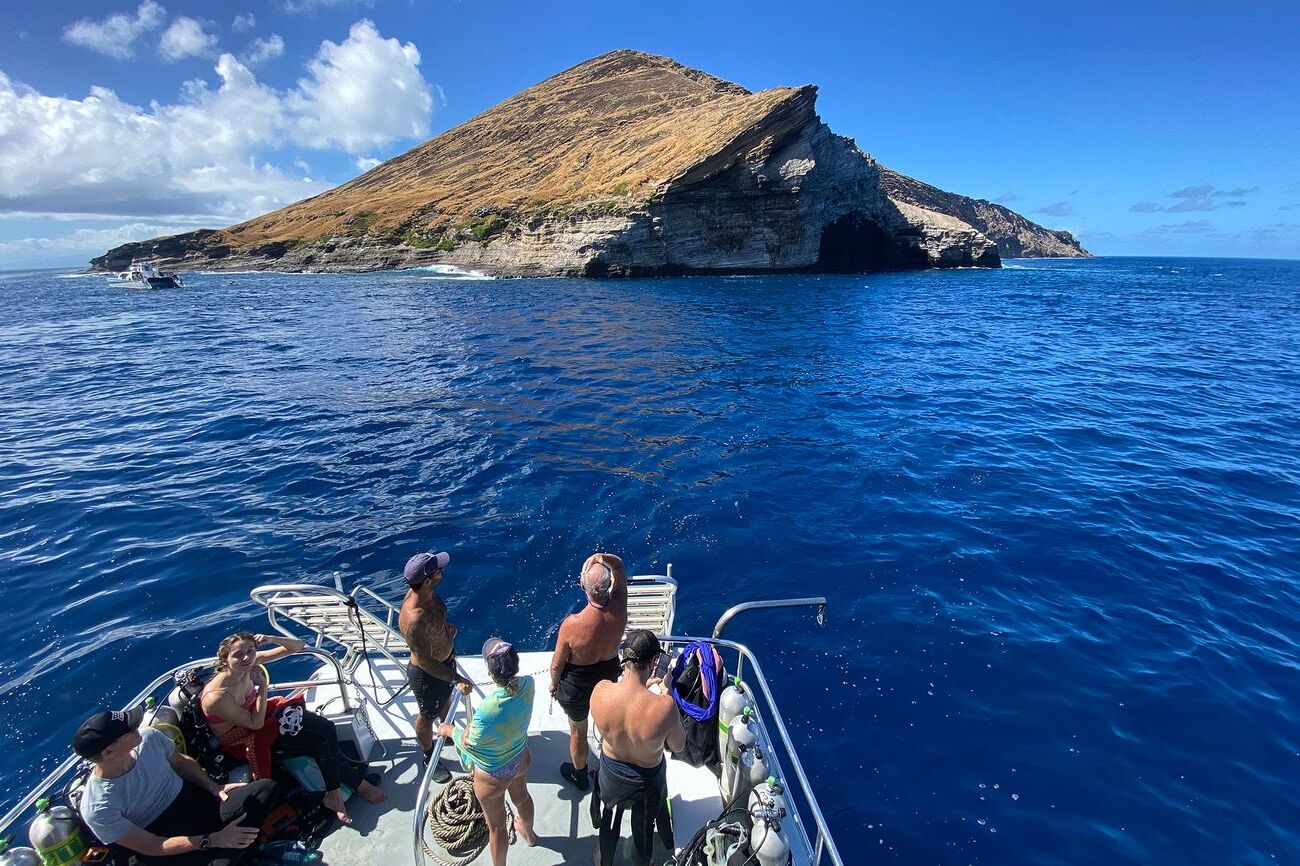
Ever wondered about Hawaii's "Forbidden Island"? Niihau, a 70-square-mile volcanic island, sits 17 miles southwest of Kauai. Known for its rich history and unique culture, Niihau remains a mystery to many. With an estimated age of 4.9-6 million years, it stands as one of Hawaii's oldest islands. The island's population, ranging from 30 to 170 residents, speaks primarily Hawaiian, preserving a distinct dialect. Purchased by Elizabeth Sinclair in 1864, Niihau has stayed under the private ownership of her descendants, the Robinson family. Strict tourism restrictions help protect its way of life, making Niihau a rare glimpse into a bygone era.
Niihau: The Forbidden Island
Niihau, often called the "Forbidden Island," is a place shrouded in mystery and rich in history. This 70-square-mile volcanic island, located 17 miles southwest of Kauai, Hawaii, offers a unique glimpse into a way of life that has remained largely unchanged for centuries. Here are 35 fascinating facts about Niihau that will transport you to this secluded paradise.
The Island's Ancient Origins
Niihau's age and geography contribute to its unique character and landscape.
- Age of the Island: Niihau is estimated to be 4.9-6 million years old, making it one of the oldest Hawaiian islands after Kauai.
- Geography: The island is mostly arid lowland, which supports sheep and cattle ranching.
A Small, Close-Knit Community
The population of Niihau is small, and the residents live a simple, self-sufficient life.
- Population: As of the 2010 census, there were approximately 170 people living on the island, although some reports suggest the number could be as low as 30-70.
- Language: Hawaiian is the primary language spoken on Niihau, and English is spoken as a second language. The dialect spoken on Niihau is unique and differs from the dialect spoken on other Hawaiian islands.
Historical Significance
Niihau has a rich history that includes royal connections and wartime incidents.
- History: Niihau was first inhabited by Hawaiian people and was ruled by the ali'i (traditional nobility) before the unification of the Kingdom of Hawaii under King Kamehameha I in 1795.
- Purchase by Elizabeth Sinclair: In 1864, King Kamehameha V sold Niihau to Elizabeth Sinclair for $10,000 in gold. This purchase marked the beginning of the island's private ownership by the Sinclair family.
- Family Ownership: The island has been owned by the Sinclair family and their descendants, the Robinsons, for over 150 years. The current owners are Bruce and Keith Robinson, great-great-grandsons of Elizabeth Sinclair.
Life on Niihau
Daily life on Niihau is vastly different from the modern conveniences most people are accustomed to.
- Restrictions on Tourism: Tourism is strictly prohibited on Niihau, except for officially permitted helicopter tours or hunting safaris. This restriction is in place to protect the island's unique culture and way of life.
- Island Layout: The island has no paved roads, no telephone service, no plumbing or running water, and no electrical grid. Residents use solar power to power their homes and lives.
- Daily Life: Most residents make a living through subsistence farming, working on the Robinson family farm, or receiving welfare support. The day-to-day life on Niihau is simple and centered around fishing, hunting, and farming.
- Church Attendance: Everyone on the island attends church on Sundays, reflecting the strict Calvinist values of the Sinclair family.
- No Cars or Stores: There are no cars on the island, and no stores. Residents travel by bicycles or foot, and they do not pay rent.
Unique Arts and Crafts
Niihau is renowned for its unique arts and crafts, which are highly prized.
- Unique Arts and Crafts: Niihau is renowned for its unique arts and crafts, including mat-weaving and ipu art. Historically, Ni’ihau-made mats were prized throughout the Pacific Islands.
- Shell Leis: The island is famous for its shell leis, which are highly prized today. The shells are used to make luxurious jewelry.
Military Presence and Historical Events
Niihau has played a role in military operations and historical events.
- Military Presence: Niihau has had a military presence since 1924, with the U.S. Navy using the island for weapons testing and special operation training programs.
- The Ni’ihau Incident: During World War II, a Japanese pilot crashed on Niihau, leading to the Niihau Incident. The incident involved a week-long struggle between the island's residents and the Japanese pilot, resulting in the pilot's death and one of his accomplices committing suicide.
Endangered Species and Environmental Efforts
Niihau is home to several endangered species and has made efforts to preserve its environment.
- Endangered Species: Niihau is home to several endangered species, including the Hawaiian monk seal, which is considered the most endangered of all the world's seals. The island serves as the primary habitat and nursery for this species.
- Ranching History: The island has been used for sheep and cattle ranching since the 19th century. However, in 1999, the ranching operations were closed due to financial losses.
Modern Conveniences and Isolation
Despite its isolation, Niihau has adapted to modern needs in unique ways.
- Weekly Supplies: Weekly supplies to the island are either brought in by the Robinsons or by the residents themselves when they visit Kauai, the nearest Hawaiian island.
- Solar-Powered School: The school on Niihau is powered exclusively by sunlight, making it the only school in the country to be solar-powered.
- Bilingual Residents: Many residents are bilingual, speaking both English and the Niihau dialect. The children on the island are particularly proficient in both languages.
Cultural Preservation
The Robinson family has made significant efforts to preserve Hawaiian culture on Niihau.
- Historical Significance: Niihau played a small role in the aftermath of the attack on Pearl Harbor. The island's isolation and strategic location made it an important site for military operations during World War II.
- King Kamehameha’s Promise: King Kamehameha IV had requested that Elizabeth Sinclair help the Hawaiian people if they ever needed assistance. This promise has been upheld by the Sinclair and Robinson families, who have maintained the island for the benefit of its residents.
- Unique Culture: The culture on Niihau is distinct and has been preserved over the years. The islanders live off the land, hunt, fish, and grow their own food, maintaining a lifestyle from a bygone era.
A Glimpse into the Past
Niihau offers a rare look into a way of life that has remained largely unchanged.
- No Modern Conveniences: Modern conveniences like indoor plumbing, cars, stores, internet, and paved roads are nonexistent on Niihau. The residents live a simple, self-sufficient life.
- Historical Population: In 1875, the population of Niihau was roughly 350 people and 20,000 sheep. The island's population has fluctuated over the years but remains relatively small.
- Island Layout and Features: The island's landscape includes smooth lava that forms tide pools, brimming with sea life. The shoreline is also home to monk seals, an endangered species.
Encounters with Wildlife
Niihau's isolation has allowed its wildlife to thrive, offering unique encounters.
- Monk Seal Encounter: During helicopter tours, visitors have encountered monk seals, including one nicknamed Mahina. The residents have a close relationship with these animals and have seen them grow from babies.
Limited Tourism
Tourism on Niihau is highly restricted to protect its unique way of life.
- Tourism Operations: Officially permitted helicopter tours and hunting safaris are the only ways to visit Niihau. These tours help underwrite the cost of the helicopter used for emergency evacuations and other island operations.
- Resident Privacy: The residents of Niihau value their privacy and do not allow visitors to interact with them. This is to protect their way of life and maintain their isolation from the outside world.
Sustainable Living
Niihau has adapted to modern needs in sustainable ways.
- Generators and Solar Power: Electricity on the island is produced by generators or solar power. The school uses solar power primarily to power computers for the students.
- Niihau Helicopters: Niihau Helicopters, owned by the island's owners, has been offering half-day trips since 1987. These tours provide a glimpse into the island's unique culture and way of life.
Pristine Beaches
Niihau's beaches offer a pristine, unspoiled experience.
- Beach Landing: Visitors to Niihau land on Nanina Beach, where they can swim, snorkel, and explore the shoreline. The beach is unending and unpopulated, offering a pristine experience.
Niihau Shell Leis
The island's shell leis are highly prized and valuable.
- Niihau Shell Leis: The Niihau shell lei is a highly prized item, made from tiny shells found on the island. These leis are sold for hundreds and sometimes thousands of dollars.
Preservation Efforts
The Robinson family has made significant efforts to preserve Hawaiian culture on Niihau.
- Preservation Efforts: The Robinson family has made significant efforts to preserve Hawaiian culture on Niihau. They have maintained the island's unique way of life and protected its natural and cultural history.
The Unique Charm of Niihau
Niihau stands out as a truly unique place in Hawaii. Its rich history, distinct culture, and simple way of life make it a fascinating island. Owned by the Sinclair family since 1864, Niihau remains largely untouched by modern conveniences. Residents live without paved roads, cars, or stores, relying on solar power and subsistence farming. The island's strict tourism restrictions help preserve its pristine environment and traditional practices. Known for its shell leis and endangered Hawaiian monk seals, Niihau offers a glimpse into a lifestyle from a bygone era. The Robinson family continues to uphold King Kamehameha IV's promise to protect the Hawaiian people, maintaining Niihau for the benefit of its residents. This island's isolation and private ownership have allowed it to maintain its unique charm, making Niihau a special place in Hawaii.
Was this page helpful?
Our commitment to delivering trustworthy and engaging content is at the heart of what we do. Each fact on our site is contributed by real users like you, bringing a wealth of diverse insights and information. To ensure the highest standards of accuracy and reliability, our dedicated editors meticulously review each submission. This process guarantees that the facts we share are not only fascinating but also credible. Trust in our commitment to quality and authenticity as you explore and learn with us.


